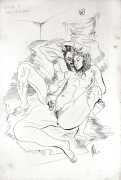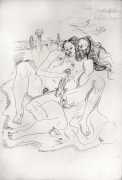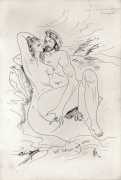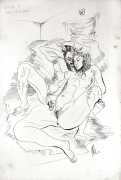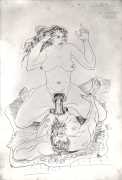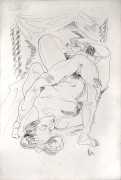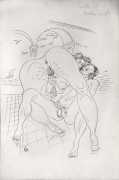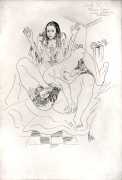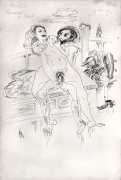 The Cuban artist Carlos Enríquez grew up in Zulueta, a rural village in the mountains of central Cuba. His formal artistic training was scant, yet he had a college education and was an avid reader. In 1918–19 he took painting classes while in high school at the Escolapios School in Guanabacoa, and in 1924, after graduating from Business School in Philadelphia, he briefly attended the Pennsylvania Academy of Fine Arts.
The Cuban artist Carlos Enríquez grew up in Zulueta, a rural village in the mountains of central Cuba. His formal artistic training was scant, yet he had a college education and was an avid reader. In 1918–19 he took painting classes while in high school at the Escolapios School in Guanabacoa, and in 1924, after graduating from Business School in Philadelphia, he briefly attended the Pennsylvania Academy of Fine Arts.
He returned to Cuba in 1925 with the painter Alice Neel, whom he married that year. In Havana Enriquez worked at the Independent Coal Company, drew and painted in his spared time, and participated in the earliest manifestations of modernism in Cuban painting.
Enríquez lived in New York from 1927 to 1930 and in Paris and Madrid from 1930 to 1933 before returning to Cuba in 1934. Like the other Cuban vanguard artists, rediscovering his native land provided the catalyst for his mature style and his commitment to express Cuban realities and myths.
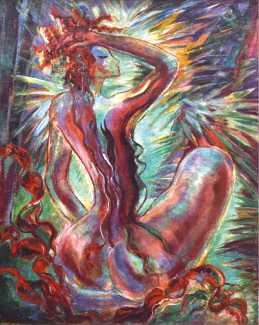
Using a personal visual language of fluid lines, overlapping colour forms and dynamic figure compositions, he represented the Cuban countryside, its inhabitants, and folklore. Poor peasants, heroic legendary and historical figures, sensual women, restless horses, and windy landscapes of palm trees and rolling hills are the main characters and setting for ‘creole ballads’ of confrontation, eroticism and conflict. In the 1940s Enríquez’s style moved toward expressionism as his palette became brighter, his brush strokes visible, and his distortion of forms more prominent.
We are grateful to our Russian friend Yuri for introducing us to the erotic work of this artist, and for sharing the images.

